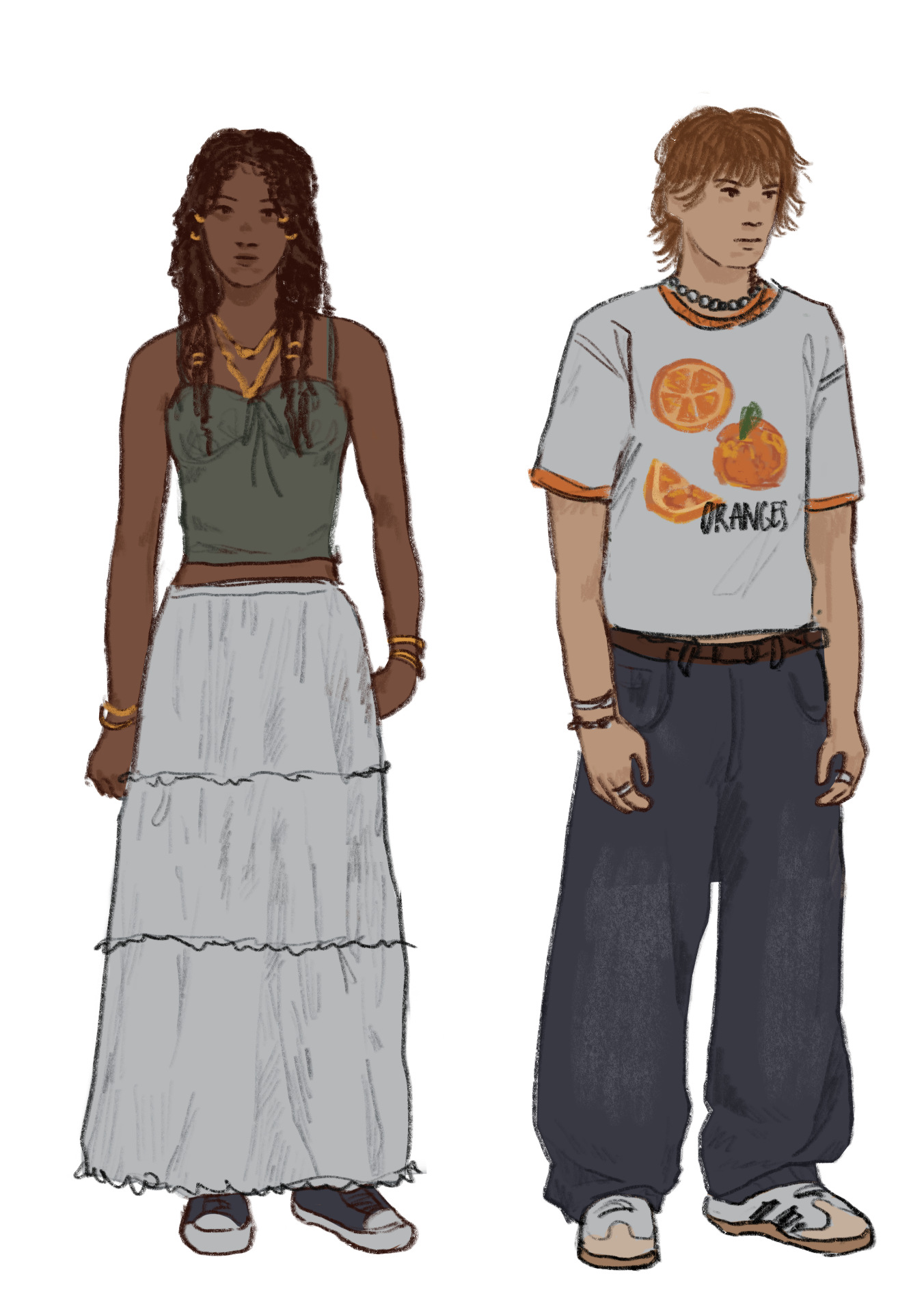Thursday, April 24
Addressing the Dress Code
Mariam Dzidzikashvili '25 (Copy Editor, 144th Board) in Features | October 6, 2023

Lawrenceville is filled with diverse students who express themselves in distinct ways across all aspects of school life: through the art they create, the poetry they write, the stories they tell, and the various characters they play on stage. Many students also opt to use their fashion style and clothes to express various facets of their identity. A multitude of students use fashion as a medium to express their emotions and convey a message about themselves to the world—but what do these students do when the freedom of their style is challenged?
Rules surrounding student clothing are of significant debate at almost every school around the globe, and dress codes can divide students and faculty into opposing halves. Dress codes aim to promote a professional, inclusive, judgment-free environment to help students focus on their studies. On the contrary, some say dress codes can be too restrictive at times, especially discriminating against girls by strictly prohibiting them from wearing certain articles of clothing and not allowing students to have the basic freedom of choosing how to express themselves.
Charise Hall, the McClellan Head of House, advocates for the implementation of school uniforms across all Forms. She believes that “it would level the students out” by making the school environment more equal and inclusive. She also believes that students would not worry about what to wear each morning. Lawrenceville could offer sets of clothing with various styles, and the school could even have the students design the uniforms so that they would be wearable for students.
Other Lawrentians agree that the dress code is not a significant problem, believing the new rules are reasonable to follow and that the dress code does not hinder their means of self-expression. However, initial backlash followed the disapproval and implementation of the “no graphic tees” rule, as most students believed it was excessive. Cira Sar ’24 expresses concerns about the rule's impact on returning students, particularly in terms of fairness and extra clothing expenses to meet dress code standards: “I really do think it’s unfair for returning students, when all of a sudden the school is telling students that the clothing they wear is not allowed and is instead an equity issue. Students may have to spend extra money for the clothing they wear at school…it’s hard to find clothes that fall under the dress code standards.” Some Lawrentians believe the dress code is reasonable and accommodating to self-expression, while others were initially unhappy with the "no graphic tees" rule, seeing it as needless.
Both students and teachers have mixed opinions on the dress code; some are not in favor of it, and others believe that it’s fairly reasonable. The debate over dress codes at Lawrenceville reflects the broader societal discussion about balancing individual expression while fostering a beneficial learning environment. Finding a middle ground that respects students’ self-expression while still upholding school values remains a complex and ongoing challenge.
Related Articles
- A Sweet Return: Melba Reopens with New Flavors and Community Spirit Ella Song ’27
- The Clock’s Ticking: A Rush to Sort Out Scheduling Conflicts Bella Wu ’28
- Debunking the Dining Hall Debate: Is Lawrenceville’s Dining Really That Bad? Isabelle Lee ’27
- Senior Profile: Sophie Cheng ’25 Katherine Qiu ’27
- Dear Pearl: The Reveal! Pearl ... and Riley McKibben ’25
Recent Articles
- Announcing: Valedictorian, Aurelian Speakers, and Faculty Speaker Sophie Liu ’27
- Senior Profile: Sophie Cheng ’25 Katherine Qiu ’27
- Debunking the Dining Hall Debate: Is Lawrenceville’s Dining Really That Bad? Isabelle Lee ’27
- Welcoming Our New VPs for 2025-2026 Sophie Liu ’27
- A Sweet Return: Melba Reopens with New Flavors and Community Spirit Ella Song ’27